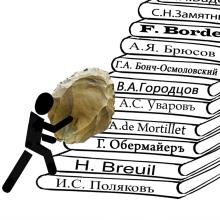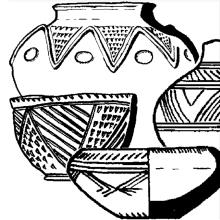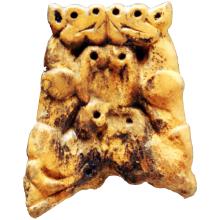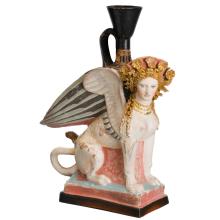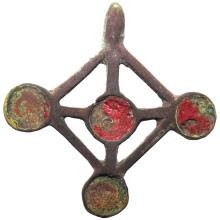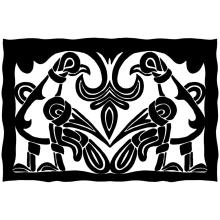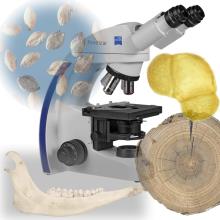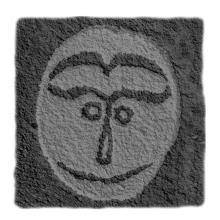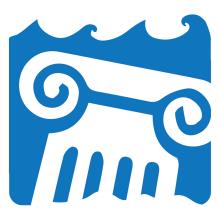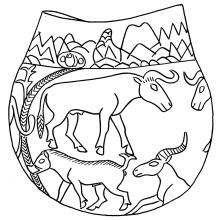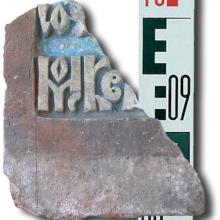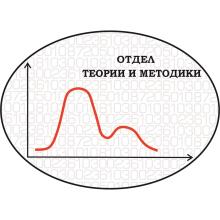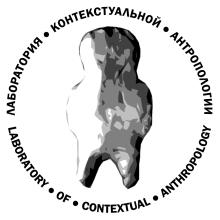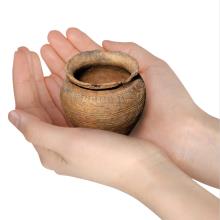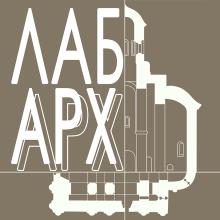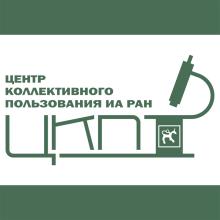
Exhibition «The Ancientries of the Amber Land»
The Kaliningrad region stands out for Europe’s largest amber deposits, which have been known and highly treasured since ancient times. The Romans used to believe that amber grows on trees in the north of Italy until the Roman scholar Plinius Maior elaborated in his papers that amber is shipped from the coast of the North Ocean, which was back then the name of the south coast of the Baltic Sea. In the 1st century A.D., the Emperor Neron sent his envoy to the Baltic coast to bring back to Rome the amount of amber sufficient to adorn the Colosseum for the duration of the gladiator games. This was the time when the Amber Road was started between the Baltic region and the Roman frontier at the Danube River through the Central Europe.
Amber trade gave rise to the area’s economic prosperity in ancient times, which is evinced by numerous archaeological sites located in the Kaliningrad region. The items found in tombs suggest that the population of the Southeast Baltic region was heavily involved in communication with the Roman Empire, which sustained the social evolution of the local barbarian tribes. Tombs containing male remains buried together with horses and rich armory indicate that there was a dedicated group of professional warriors and war chiefs, which apparently controlled the amber trade.
The wealth of the Amber Land’s population is also confirmed by finds in early Medieval tombs. In 2016-2017, development-led excavations in the Zelenogradsk area of the Kaliningrad region that were carried out by the Institute of Archaeology of the Russian Academy of Sciences discovered an exceptional burial site of the local gentry – Aleyka-7. This monument belongs to the Migration period with the most outstanding items dated the 6th – 7th century.
The burial site belonged to the inhabitants of the Amber Land – the Aesti tribe that populated the area spanning from the Vistula River to the Neman River. The site was located on the bank of the Aleyka River, sitting on a hill that used to be between the two arms of the river and appeared as the ‘dead island’. Studies of more than 800 tombs revealed that the ancient Aesti cremated their dead tribesmen together with various sorts of items, such as jewelries, armory, and dishware. The cremated remains and what was left from the burnt items was collected, put in earthenware urns, wooden boxes, and bark baskets, or wrapped in cloth and dug in. Tombs often contained a sacrificial horse and were covered with stonework. Major tribe members, such as chiefs and warrior leaders, as well as their wives and children, were buried in wooden chambers next to two to four horses. This burial site is remarkable for quite a significant number of such gentry tombs – 16 in total vs. very few on other sites, such as the Logvino burial site, located in the Zelenogradsk area as well.
The ancient burial site Aleyka-7 contained numerous finds – more than 1,500 in total. These were earthenware vessels, iron knives, silver, bronze and iron belt buckles, silver clothing clips, and jewels – silver torcs to be put on neck, gold bracelets, glass and amber bead necklaces. Sacrificial horses were put in graves fully harnessed, as if ready for an after-life travel together with the owner. Horse tombs, connected with rich burial chambers, also contained the remains of wooden saddles with silver fittings.
The wooden burial chambers of the local gentry contained the most opulent finds. Plentiful rich contents highlighted the high social rank of the buried people. Horse tombs were located west of the chambers.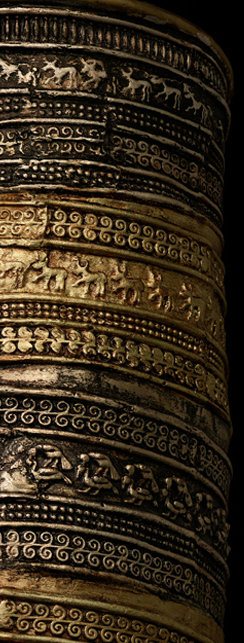
The chambers contained unmatched sheathed swords covered with embossed silver plates and equipped with handles, iron spearheads, decorated iron spurs, various belt details made of bronze and iron, silver fittings for drinking horns bearing images of animals and birds. A high-profile warrior’s tomb with four horses included is worthy of special mention: this was an exceptional discovery, never seen in any other burial rite before. The tomb contained an extraordinary drinking horn with silver and gold-plated fitting, and the horn’s silver and gold-plated nielloed tip was made in the form of a predatory bird, holding a fish in one paw and a small bird in the other. This rhyton features a classic example of North European art. Horns with similar tips as well as semblant gold-plated and silver harness items are found across the vast area of the barbarian Europe. In terms of wealth, the Aleyka-7 discoveries match those of principal and royal tombs.
These new and very rare finds at the heart of the Sambiysky peninsula significantly enhanced our knowledge of the ancient Balts’ social system. The power and wealth of the local leaders stemmed from amber trade, which penetrated from the Baltic coast across Europe.
The Aleyka-7 burial site is not only one-of-the-kind with regard to the local ancientries of the Migration period but is also very remarkable for the Baltic region and the North Europe in general. The rich finds of the archaeological excavations in the Kaliningrad region carried out by the Institute of Archaeology of the Russian Academy of Sciences enabled to trace the evolution of the ancient population of Europe, and development of their culture, economy, and social structure.
ОРГАНИЗАТОРЫ ВЫСТАВКИ:
The Institute of Archaeology RAS
The Kaliningrad regional museum of history and art
НАД ВЫСТАВКОЙ РАБОТАЛИ:
Director of the Institute of Archaeology RAS N.А. Makarov
Director of the Kaliningrad regional museum of history and art Е.S. Maniuk
Deputy Director for Research of the Institute of Archaeology RAS А.V. Engovatova
Leading Researcher at the Department of Archaeological Heritage Preservation of the Institute of Archaeology RAS А.V. Mastykova
Research Fellow at the Department of Archaeological Heritage Preservation of the Institute of Archaeology RAS E.B. Zaltzman
Junior Research Fellow at the Department of Archaeological Heritage Preservation RAS К.N. Skvortsov
Junior Research Fellow at the Department of Archaeological Heritage Preservation RAS I.V. Litvinenko
Researcher in the Archeology Sector of the Kaliningrad regional museum of history and art D.А. Lapina
Photos
А.А. Bronnikov
Exhibition design
V.А. Kylishov


